Crime and Punishment Trading Cards (1992) by Bruce Carroll and Bill Lignante.
I don’t know what format these cards were originally sold in, but I’m guessing that the were sold in 12-packs (like the comic book creators) and not in one big gulp (like most of the previous ones).
The person I bought them from (on ebay) has helpfully put the set into a plastic box.
So what’s this then?
It’s a card series about a handful of trials! It’s even weirder than the other Eclipse trading cards. For instance, the Sirhan Sirhan trial goes for 22 cards. I can just see the kids desperately trading for the 19th card just to know what Sirhan’s lawyer said towards the end of the trial.
We get some very famous trials, like Charles Manson and Patty Hearst, and trials of people related to those cases.
I guess as gimmicks go, this… is a gimmick. But I have to wonder whether these sold at all. The previous sets had a much simpler hook: They were basically one person/one card, while these are extended essays over a bunch of cards, and that’s not even a conversational piece.
And the artwork is uniformly uninteresting.
There’s five limited edition bonus cards. My set only had two of these! Oh noes!
This news story from The Comics Journal 148 by “MCH” (I should look that up in the TCJ indicia) has a story that seems relevant.
It’s about a different set of trading cards, True Crime:
More than three months before they were scheduled to ship, Eclipse’s True Crime Trading Cards became the topic of intense media coverage. At one point in early February, the Eclipse staff set production work aside to respond to charges that the cards were exploiting crime victims. Entertainment Weekly started the mania with a short news item about the cards in its Jan. 31 issue, based on an Eclipse press release. The item claimed that the cards “both inform and exploit the current fascination with murderous rampages” and concluded, “Kinda makes one nostalgic for when cards just sported heroic sluggers.”
[…]
As the story snowballed, Yronwode, Eclipse publisher Dean Mullaney and True Crime writers Valarie Jones, Peggy Collier and Max Allan Collins spent a week trying to get the story straight in interviews with newspaper, TV and talk,radio outlets across the country. Dean Mullaney’s New York-based brother (and Eclipse chairman) Jan Mullaney took the cause to New York media, including the Today show. “An Associated Press was very hostile.” Yronwode recalls. “She was screaming at me on the phone, saying •how can you defend what you’re doing?’ As the days wore on, we sent information on our cards and on the history Of non-sports cards to all the callers. The radio callers and the coverage became about 50% favorable.”
In her handouts, Yronwode noted that current-affairs trading cards have actually been around longer than baseball cards, and that Eclipse’s line includes serious examinations of the savings-and-loan scandal, the Iran-Contra affair, and the Kennedy assassination.
“The worst thing,” Yronwode said, “is that a Christian ministry group asked its members to mass-write and mass-call us. They’re inundating us with impassioned letters, promising to do everything from pray for us to boycott our products. When I talk to them and tell them what these cards really are, they sometimes act ashamed that they were so misled. One thing this has done is reimpress me with how willing people are to be used by other people. It reminds me of people in the media last year telling how Saddam was like Hitler.”
That’s the set I thought this was! I bought the wrong one!
Lignante is also a cartoonist and courtroom artist. For the past 25 years he’s illustrated courtroom scenes for ABC News, covering the trials of Patty Hearst, Charles Manson, Sirhan Sirhan, Angela Davis and John DeLorean.
Those drawings, which used to just “sit around the house for years,” are on packs of trading cards published this month by Eclipse Enterprises in Forestville, Calif.
Called “Crime and Punishment,” they come 12 to a pack and feature dramatic courtroom scenes, accompanied by writer Bruce Carroll’s text on the back. (They’re available at Golden Apple in Los Angeles.)
Lignante says that when attempts to get his courtroom illustrations compiled into a book didn’t work out, he tried trading cards.
Now it all makes more sense. It’s the artist’s project, and he already had all the artwork ready to go, so I guess the investment was minimal for everybody involved.

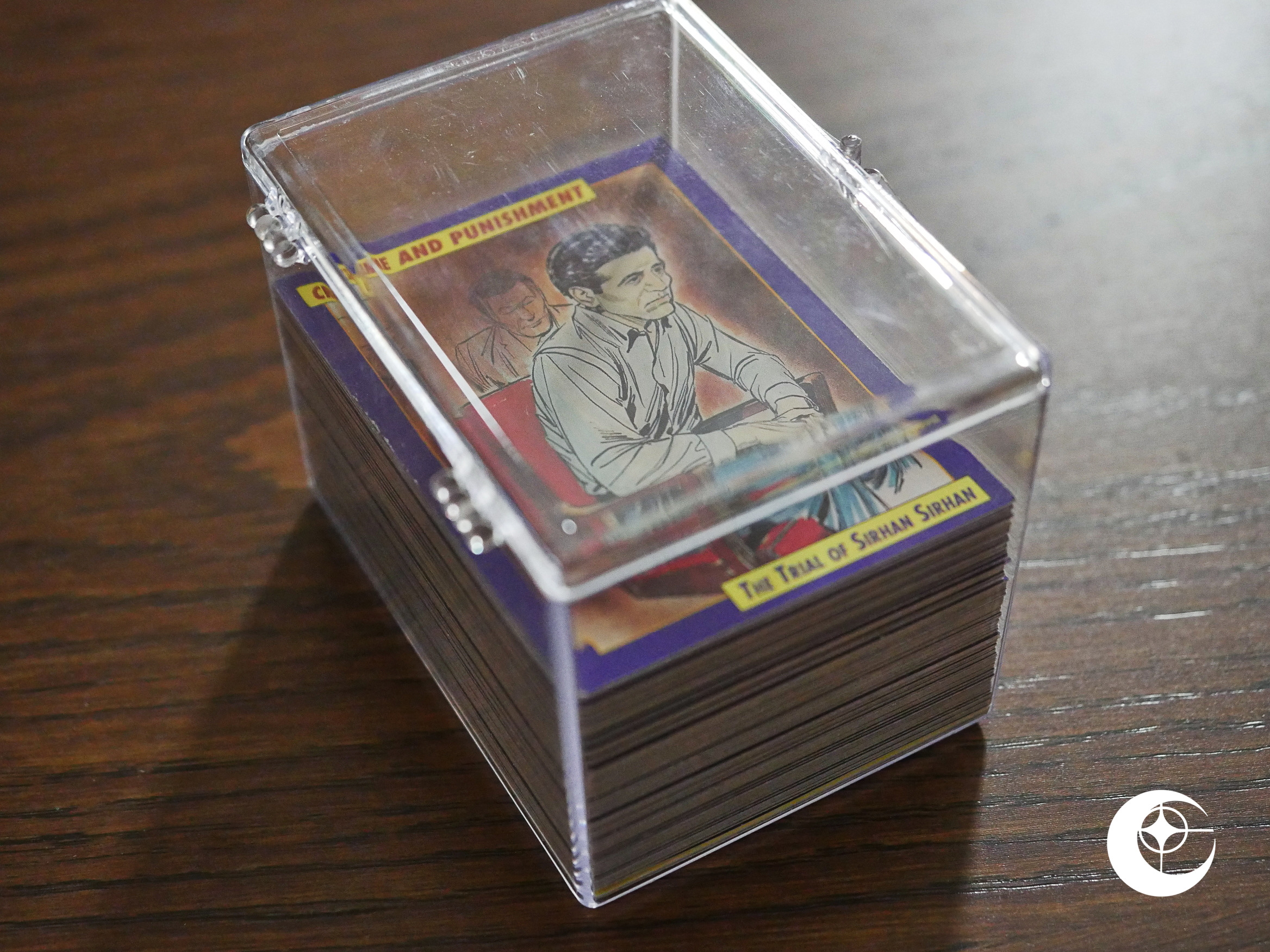
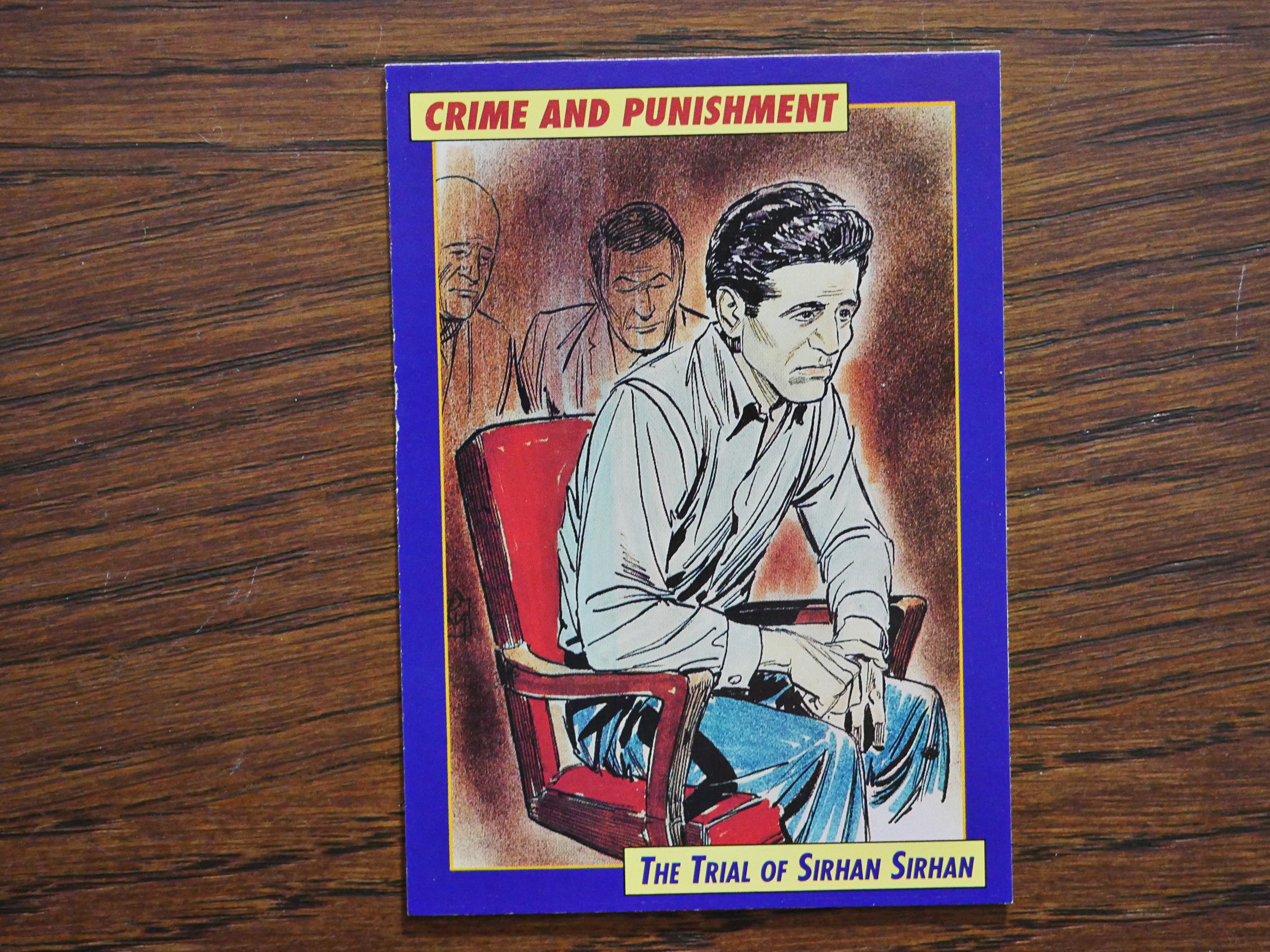
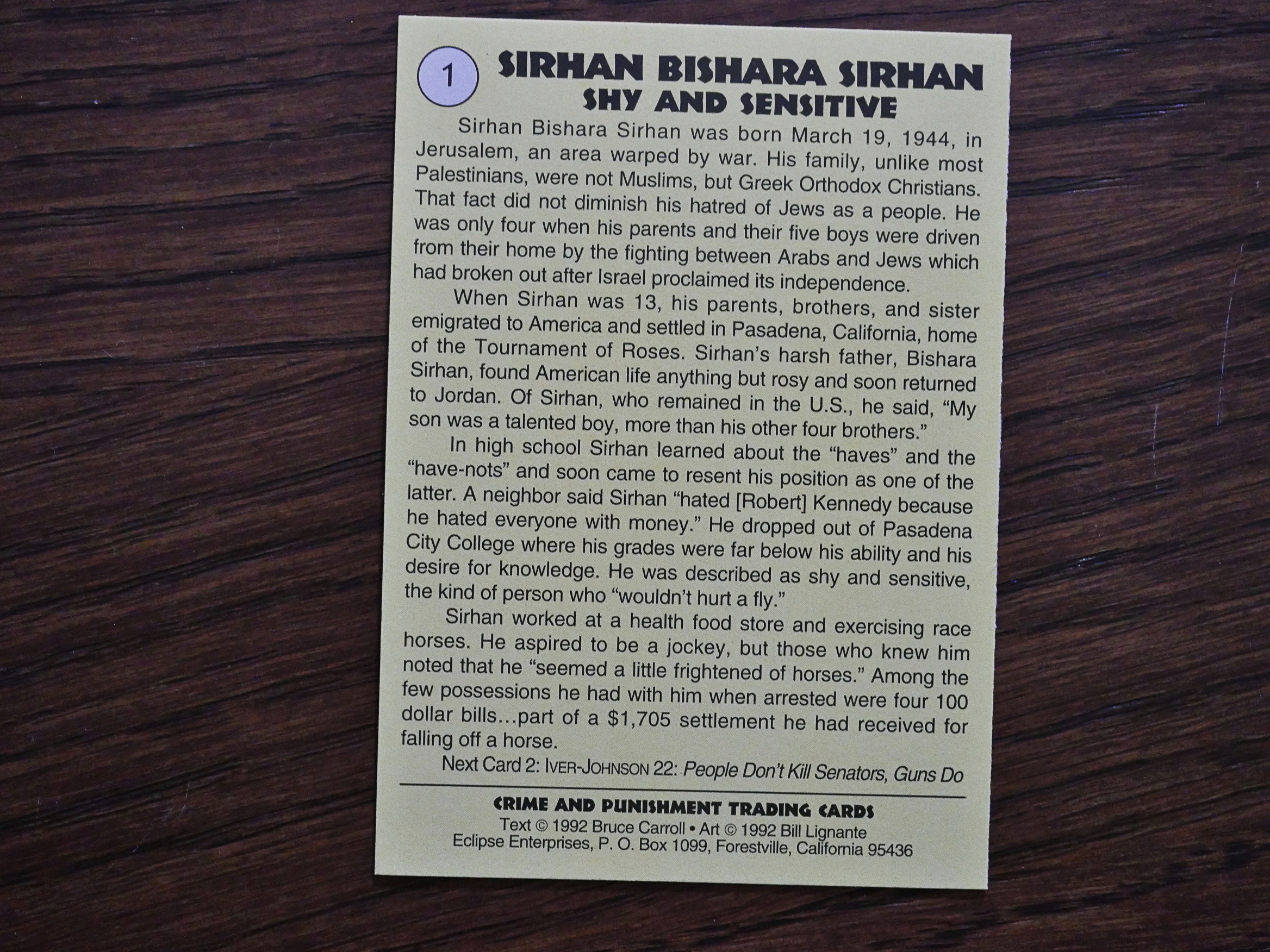
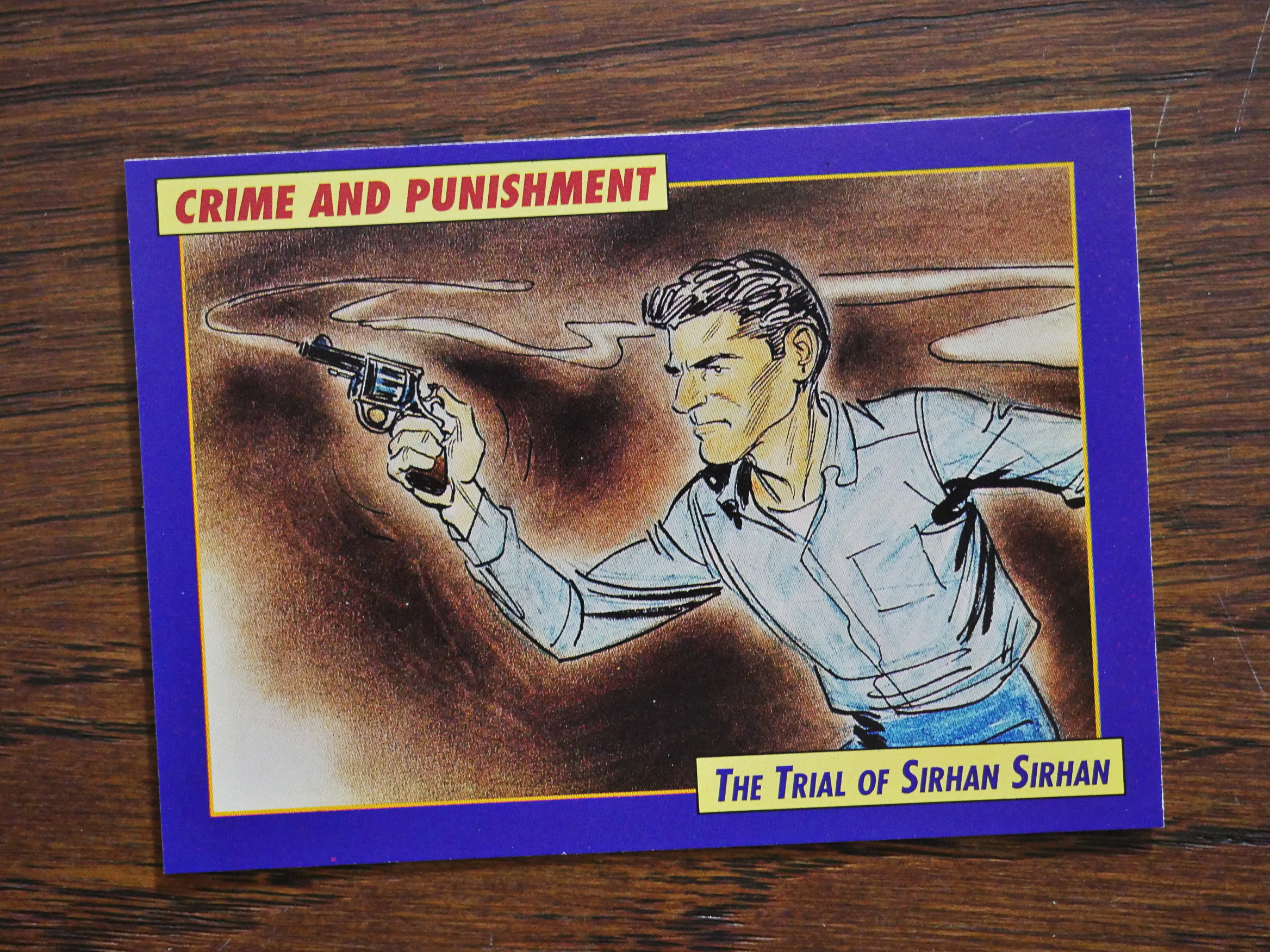
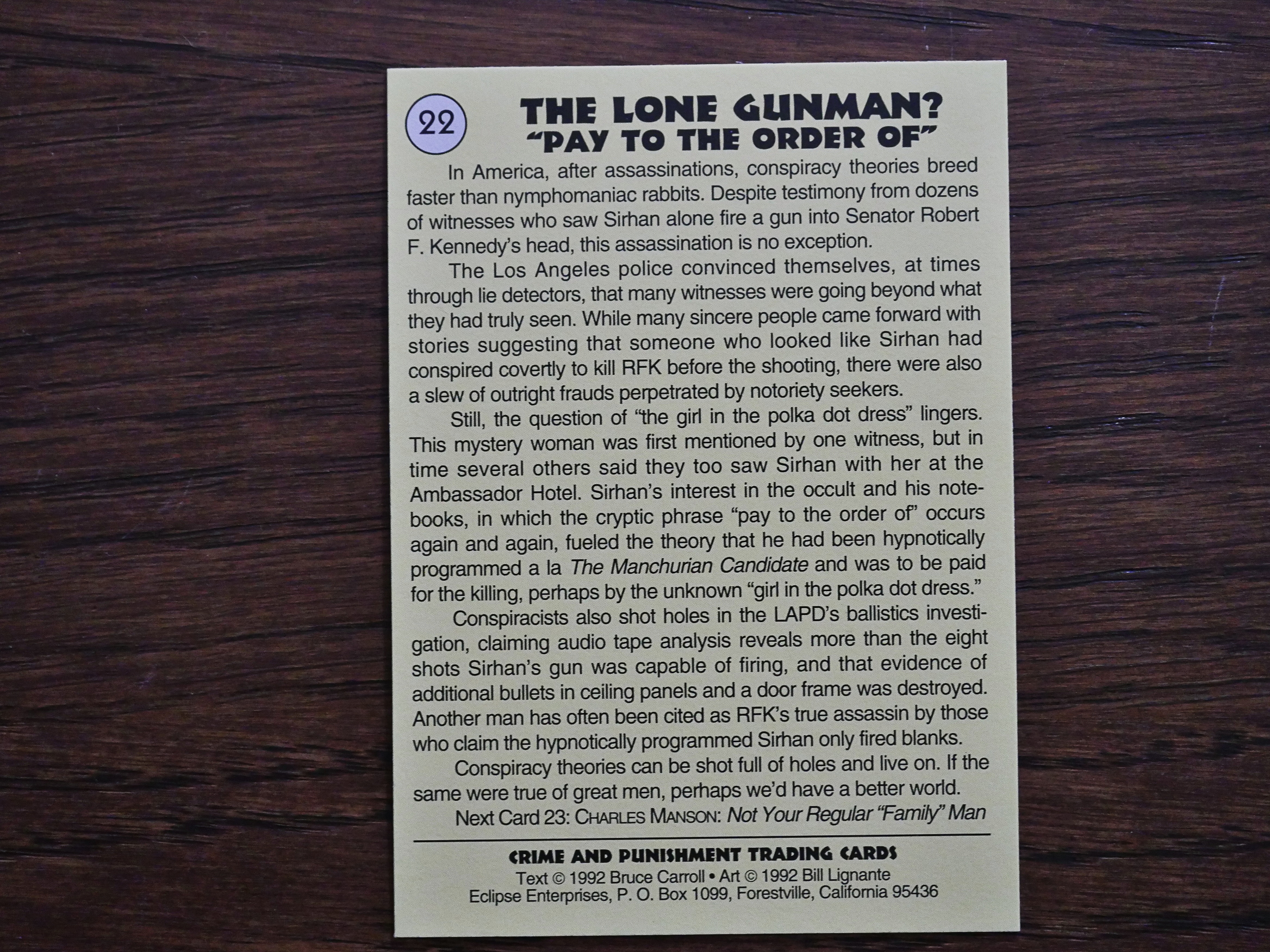
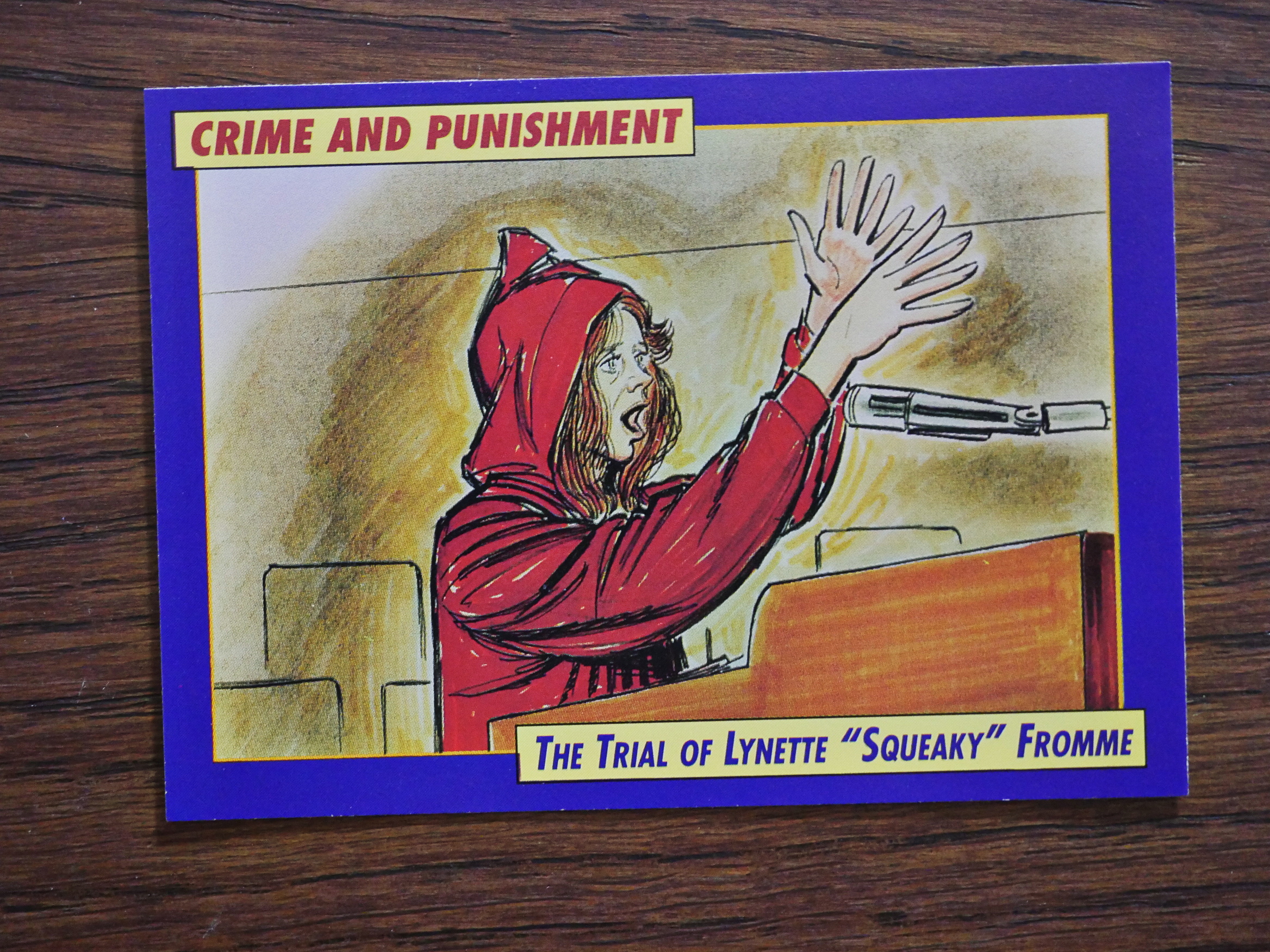
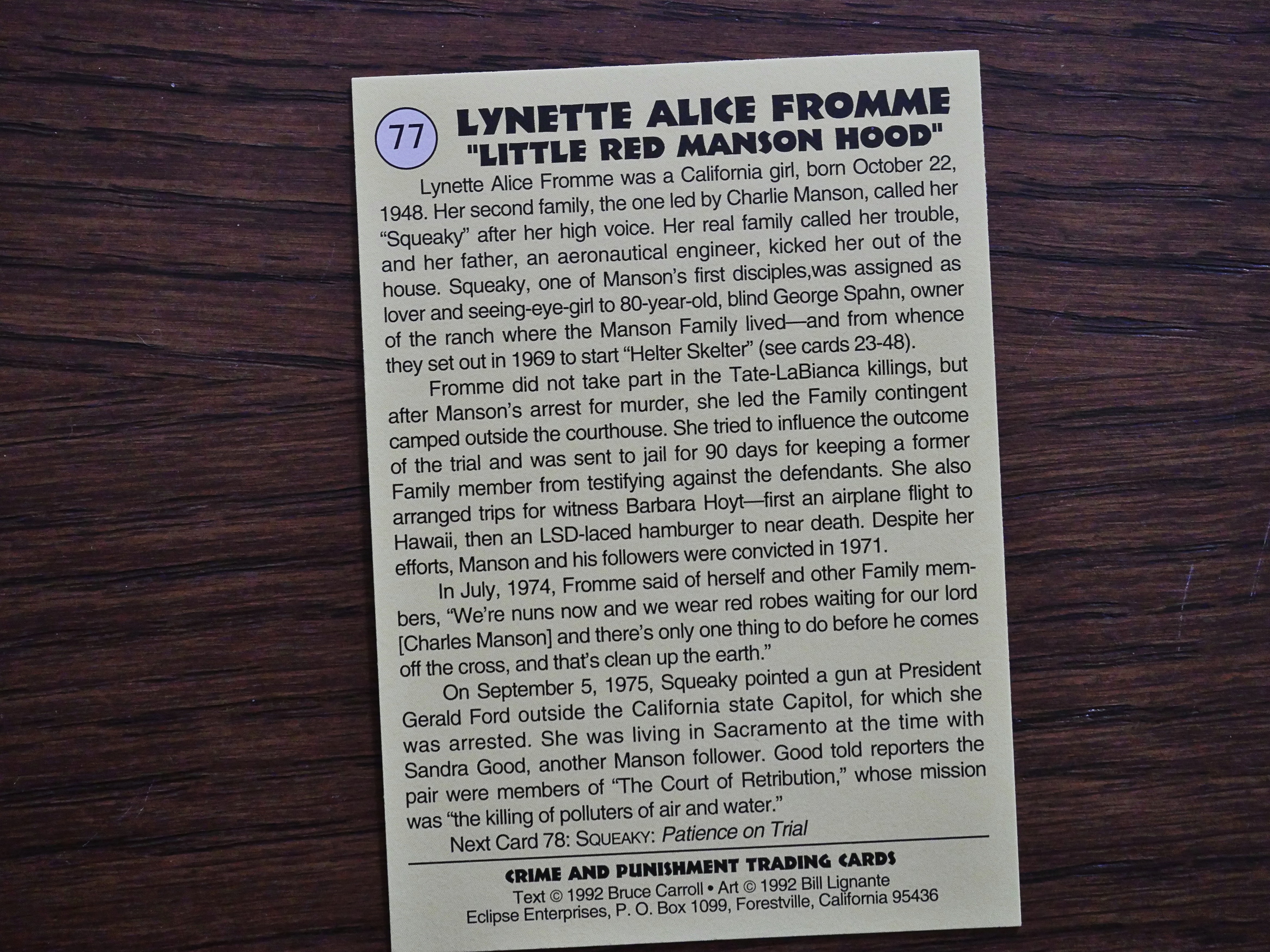
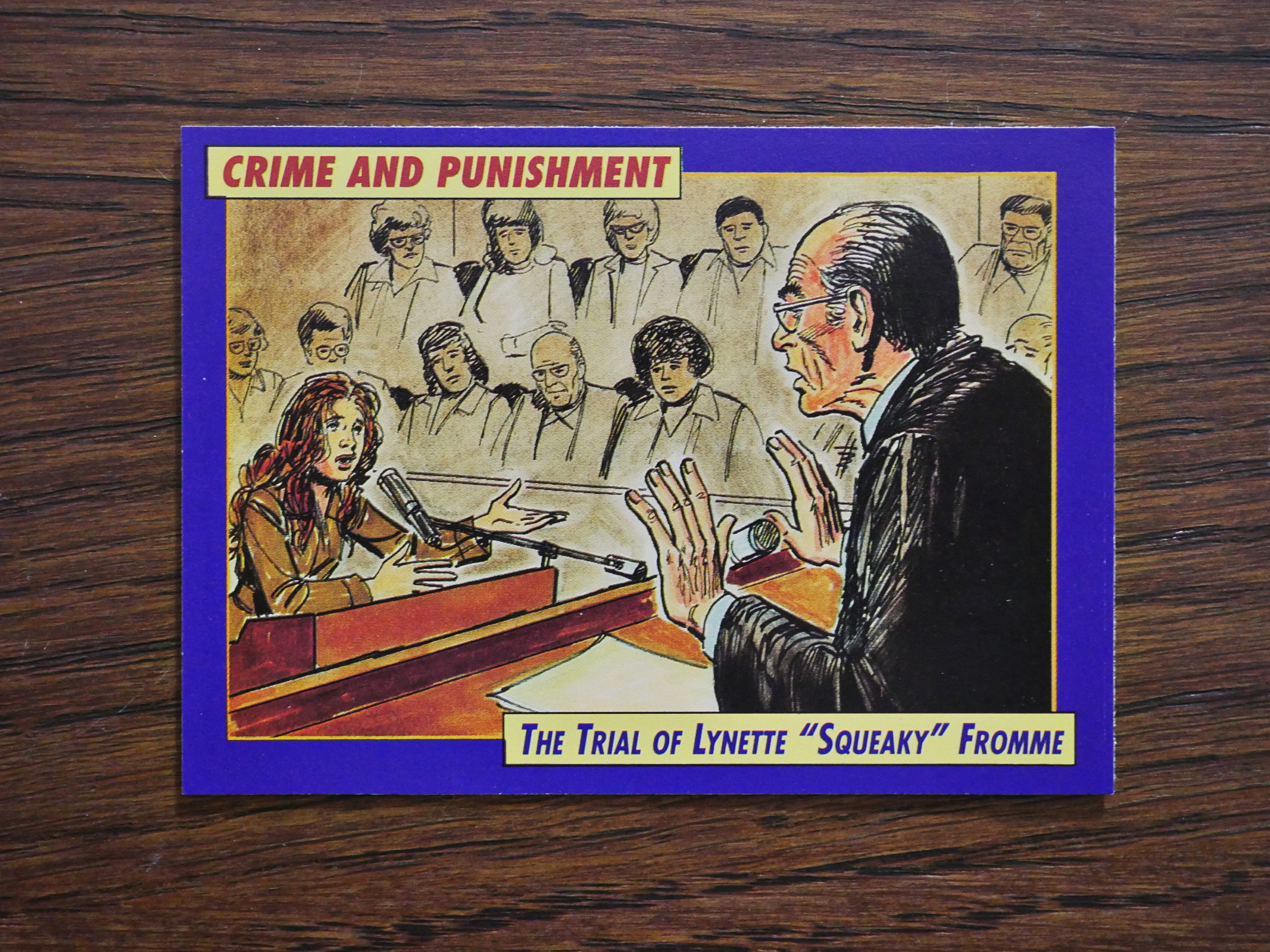
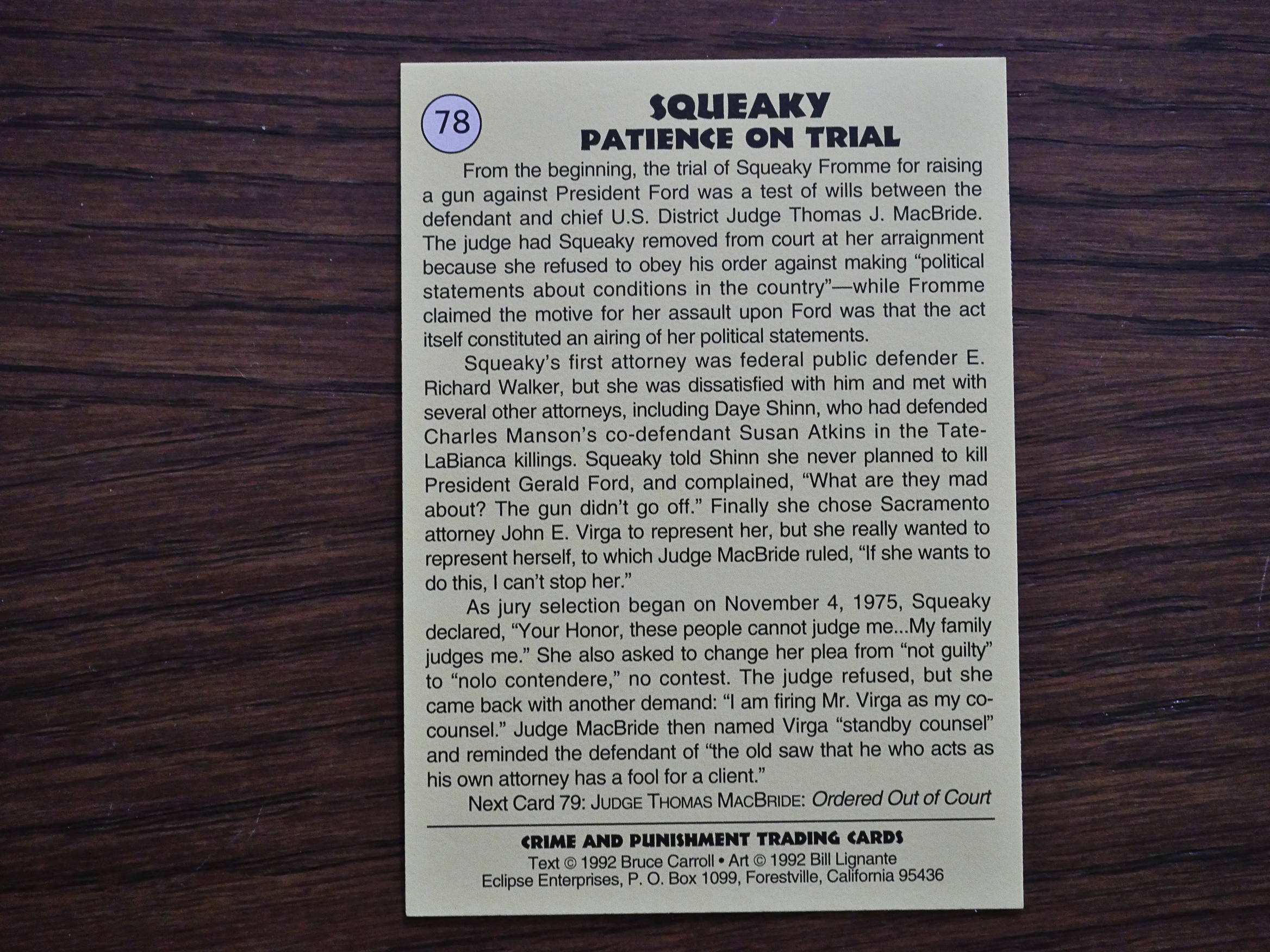

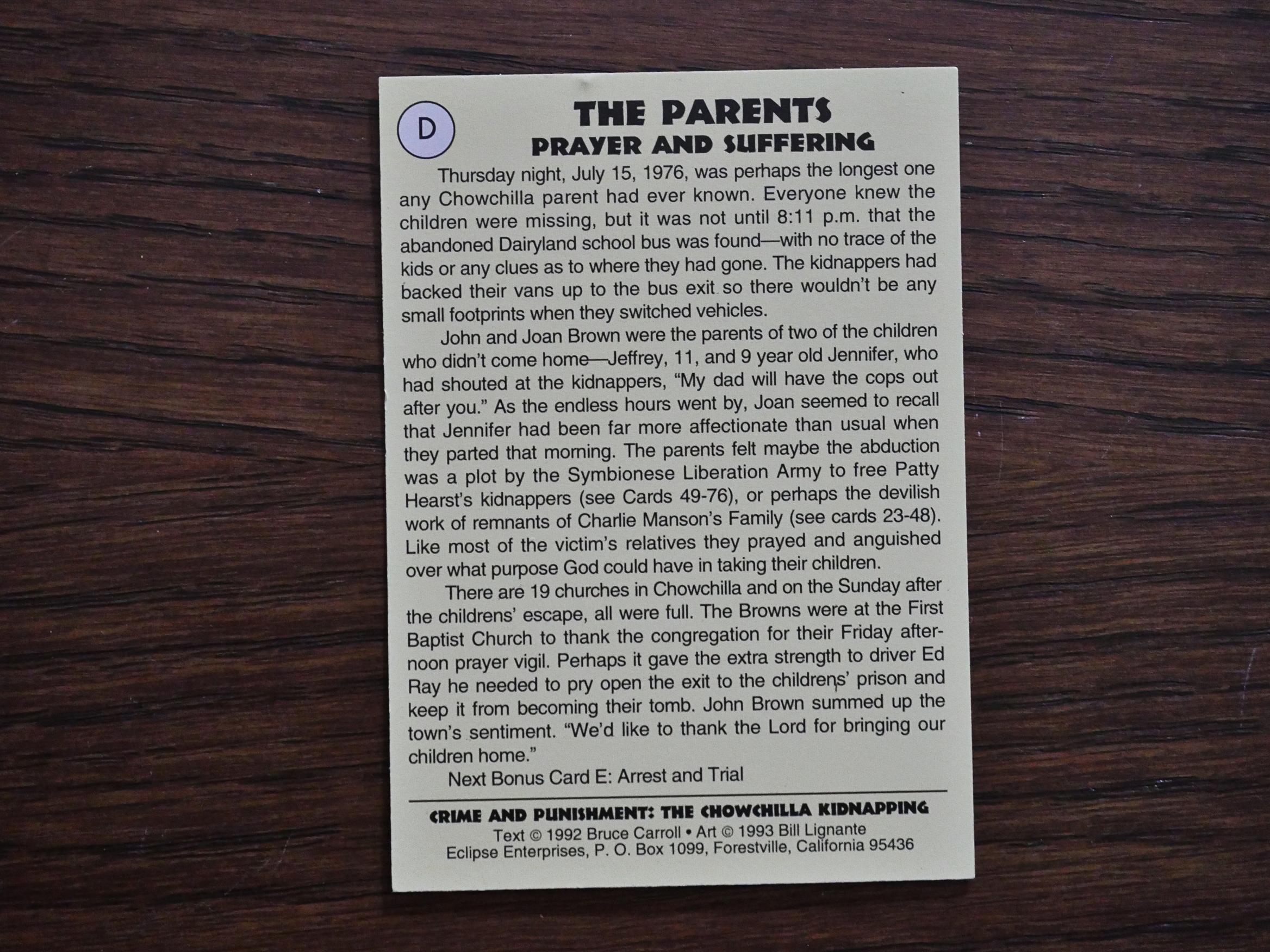
What sort of weirdo would buy this? I guess I would, especially as a dorky kid.
The set was informative and educational. I learned a great deal from reading these cards. I think that adults should be permitted to buy these products as long as they don’t push it upon young people . After all, these sets were not made for the purposes of selling to children.
I was giving some cards of a lady but years ago sadly no longer with us I was cleaning old stuff from loft and found some ,,not my kids of thing but was told to put on E.bay